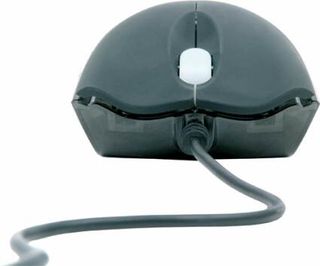Razer's Diamondback: The Mouse that Roars?
Precise, But

The mouse's accuracy is really diabolical, but only in conjunction with its speed. If you set the mouse to a normal speed in Windows for day-to-day tasks, the MX 1000 laser proves to be more precise. The sensor itself is no better. On the other hand, when you speed up the mouse, the Diamondback lets you move faster with more precision than the MX 1000. You can't really attain 1600 cpi, in my opinion. In 1600x1200, you probably have to stop somewhere above 1000. But regardless, the result is impressive. With a little practice, you can move very, very fast and still stay very accurate. What's the advantage? It's really only evident in FPS games. For example, if you have to make a very broad, rapid movement and then reposition yourself to take aim, speed and precision are the twin secrets to effectiveness. For all those whose activity on the PC is 80% FPS and who can control a mouse this sensitive, the Diamondback is the best choice. In all other cases, I'd recommend the MX 1000, or failing that the MX 510. For all standard uses and even for photo retouching, you'll do a lot better with a Logitech. The same is true for strategy and role-playing games. The Razer Diamondback is a mouse that's intended only for fans of first-person action games. But for them, it's the ultimate weapon. A final point: overclocking. If you push your USB port to 500 Hz, the Diamondback becomes easier to control at high speeds and is more flexible.

So in the end, the mouse hierarchy hasn't been shaken up. Overall, I would still rank the Logitech MX 1000 first for all types of use. Then, I'd say you'd do just as well to forget the Viper and go with the Diamondback for $10 more. It's faster and more accurate. I'd place it in a tie with the MX 510 in terms of use. If you play FPS games and your movements are precise, the Razer will be the better choice. Otherwise go for the MX 510. The Diamondback is really a gamer's mouse, and is now on sale on the www.razerzone.com site for $60.
Stay on the Cutting Edge
Join the experts who read Tom's Hardware for the inside track on enthusiast PC tech news — and have for over 25 years. We'll send breaking news and in-depth reviews of CPUs, GPUs, AI, maker hardware and more straight to your inbox.
Most Popular

